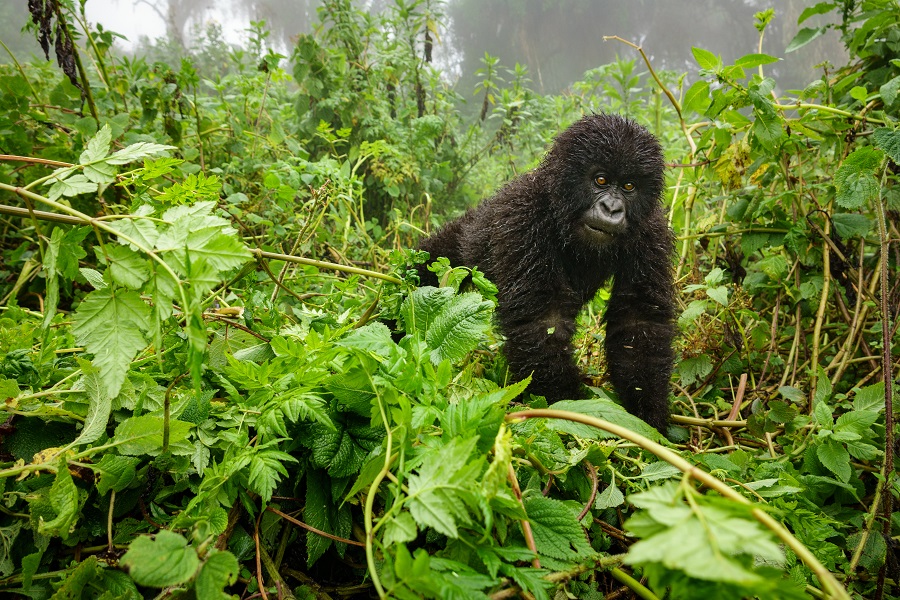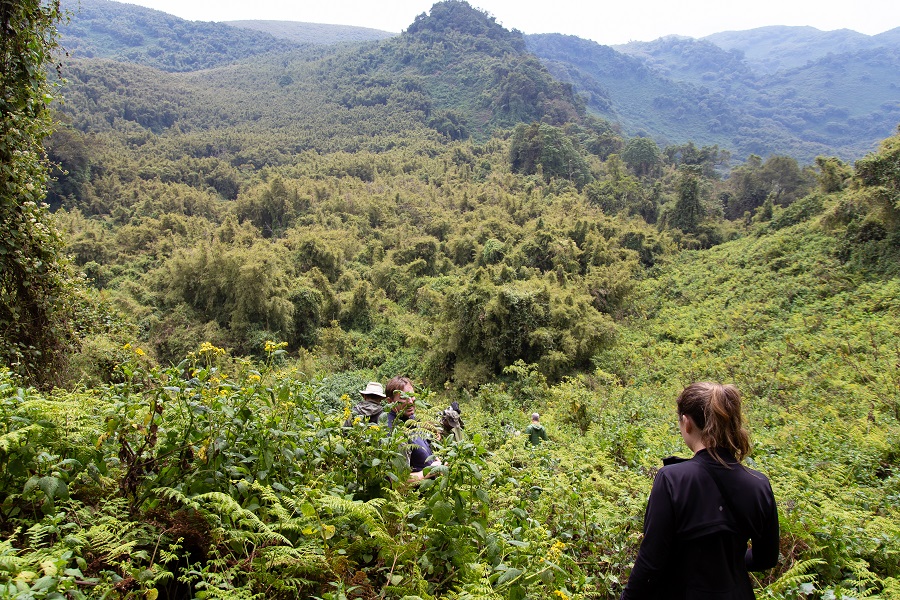In the mist-shrouded forests of Central Africa lies one of the most captivating wildlife experiences on Earth: an encounter with mountain gorillas in their natural habitat. With a population of merely 1,000 individuals remaining in the wild, these magnificent primates offer a rare and profound connection to the natural world that leaves an indelible mark on those fortunate enough to witness it.
Gentle Giants of the Forest
Mountain gorillas, our closest living relatives after chimpanzees and bonobos, share remarkable similarities with humans in their social structure and behavior. These intelligent primates live in close-knit family groups, exhibiting complex emotional lives and social dynamics that mirror our own in many ways.
At the head of each gorilla family is a dominant silverback male, a powerful yet gentle leader whose primary role is to ensure the safety and well-being of his group. With impressive strength and unwavering dedication, the silverback makes crucial decisions about foraging locations, movement patterns, and protection strategies against potential threats.
Female gorillas play an equally vital role within the family unit, primarily focused on nurturing the young. They form strong, enduring bonds with their offspring, providing attentive care to infants and closely supervising juveniles as they begin to explore their lush, forested environment. This division of responsibilities within gorilla society offers a fascinating parallel to human family structures, highlighting the evolutionary ties that bind us.

A Rare and Precious Encounter
The opportunity to observe mountain gorillas in their natural habitat is truly a privilege. The two primary locations for these extraordinary encounters are Uganda's Bwindi Impenetrable Forest National Park and Rwanda's Volcanoes National Park. These protected areas serve as the last strongholds for these endangered primates, offering them a safe haven amidst the encroachment of human activity.
While gorilla trekking is technically a year-round activity, the dry seasons in both countries provide the most favorable conditions for visitors. The long dry season, spanning from June to mid-September, offers the easiest trekking conditions with firmer ground and clearer trails. For those seeking a slightly less crowded experience, the period from December to February in Rwanda can also be an excellent time to visit, though humidity levels may be higher.
Budget-conscious travelers might consider visiting Uganda during its low seasons (March to May and October to November). During these periods, the parks are less crowded, and accommodation prices tend to be more affordable. However, it's important to note that these months coincide with the rainy seasons, which can make trekking more challenging.

Choosing Your Gorilla Encounter
When deciding between Rwanda and Uganda for your gorilla trekking adventure, several factors come into play. Rwanda boasts a higher number of habituated mountain gorilla groups, making permits generally easier to obtain. The terrain in Rwanda's Volcanoes National Park is also considered less challenging for trekking compared to Uganda's Bwindi Impenetrable Forest.
However, this accessibility comes at a premium. A gorilla trekking permit in Rwanda costs USD $1,500 per person. In contrast, Uganda offers a more budget-friendly option at USD $600 per permit. These government-issued passes not only grant access to observe the gorillas but also play a crucial role in supporting ongoing conservation efforts.
Mountain rain forests are steep, about 8,000 to 13,000 feet. Trekking to encounter these magnificent primates is a challenging adventure, with muddy trails, thick undergrowth, and high-altitude conditions testing visitor's endurance. The journey can last 3 to 8 hours, depending on weather, gorilla movements, and visitor’s fitness levels. Proper preparation, including building cardiovascular fitness, wearing appropriate footwear, and acclimatizing to the altitude, helps ensure a successful and unforgettable gorilla trekking experience.
Regardless of the chosen destination, a mountain gorilla encounter is an investment in both personal experience and wildlife preservation. As you lock eyes with these gentle giants, observing their complex social interactions and witnessing their resilience in a challenging environment, you'll find yourself transported to a world where the lines between human and animal blur. It's a humbling reminder of our place in the natural world and the importance of protecting these extraordinary creatures and their habitats.
